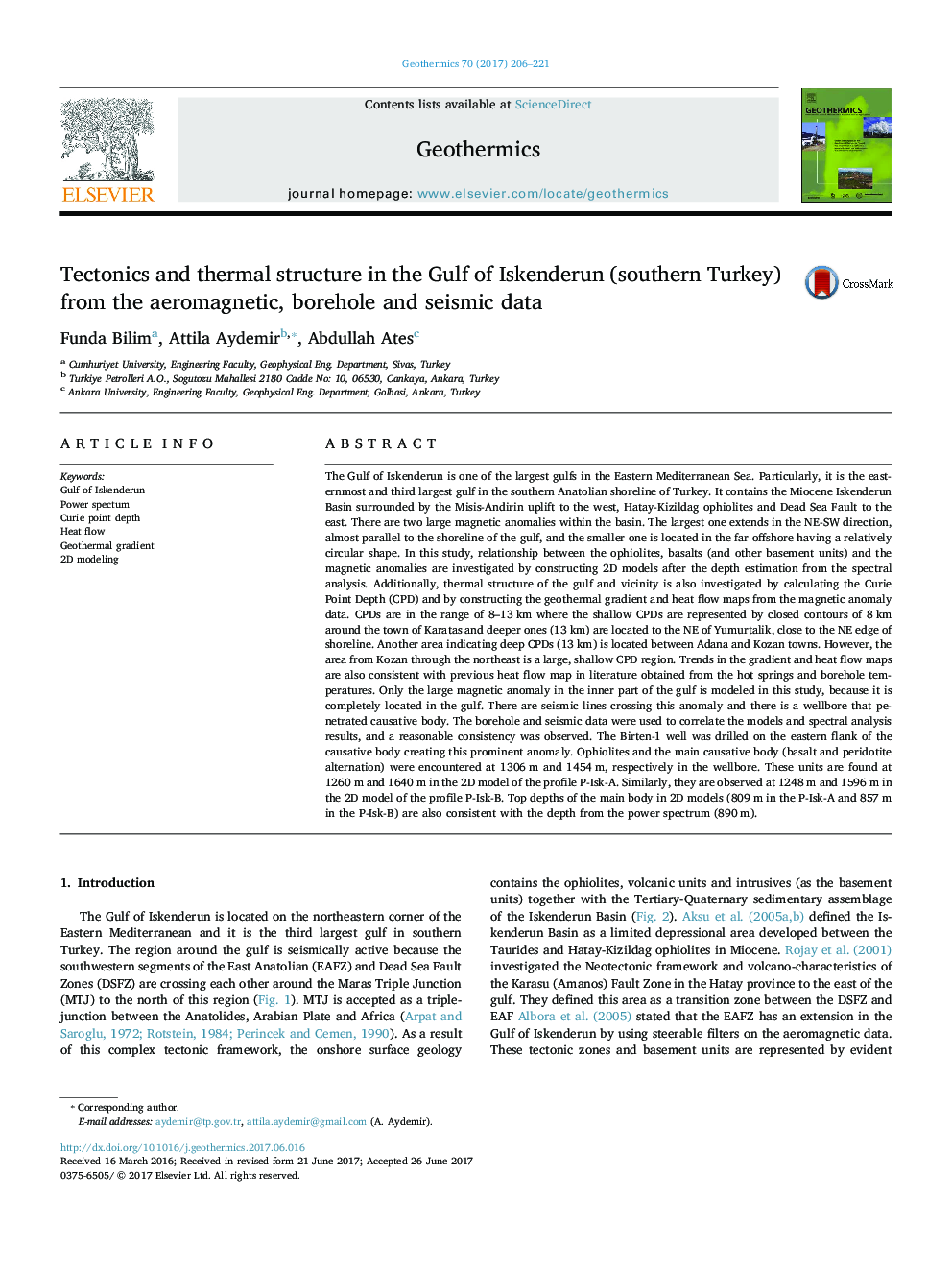| کد مقاله | کد نشریه | سال انتشار | مقاله انگلیسی | نسخه تمام متن |
|---|---|---|---|---|
| 5478629 | 1521899 | 2017 | 16 صفحه PDF | دانلود رایگان |
عنوان انگلیسی مقاله ISI
Tectonics and thermal structure in the Gulf of Iskenderun (southern Turkey) from the aeromagnetic, borehole and seismic data
ترجمه فارسی عنوان
سازه های ساختمانی و ساختمانی در خلیج اسکندرون (جنوب ترکیه) از داده های هوای مغناطیسی، گمانه و لرزه ای
دانلود مقاله + سفارش ترجمه
دانلود مقاله ISI انگلیسی
رایگان برای ایرانیان
کلمات کلیدی
موضوعات مرتبط
مهندسی و علوم پایه
علوم زمین و سیارات
ژئوشیمی و پترولوژی
چکیده انگلیسی
The Gulf of Iskenderun is one of the largest gulfs in the Eastern Mediterranean Sea. Particularly, it is the easternmost and third largest gulf in the southern Anatolian shoreline of Turkey. It contains the Miocene Iskenderun Basin surrounded by the Misis-Andirin uplift to the west, Hatay-Kizildag ophiolites and Dead Sea Fault to the east. There are two large magnetic anomalies within the basin. The largest one extends in the NE-SW direction, almost parallel to the shoreline of the gulf, and the smaller one is located in the far offshore having a relatively circular shape. In this study, relationship between the ophiolites, basalts (and other basement units) and the magnetic anomalies are investigated by constructing 2D models after the depth estimation from the spectral analysis. Additionally, thermal structure of the gulf and vicinity is also investigated by calculating the Curie Point Depth (CPD) and by constructing the geothermal gradient and heat flow maps from the magnetic anomaly data. CPDs are in the range of 8-13Â km where the shallow CPDs are represented by closed contours of 8Â km around the town of Karatas and deeper ones (13Â km) are located to the NE of Yumurtalik, close to the NE edge of shoreline. Another area indicating deep CPDs (13Â km) is located between Adana and Kozan towns. However, the area from Kozan through the northeast is a large, shallow CPD region. Trends in the gradient and heat flow maps are also consistent with previous heat flow map in literature obtained from the hot springs and borehole temperatures. Only the large magnetic anomaly in the inner part of the gulf is modeled in this study, because it is completely located in the gulf. There are seismic lines crossing this anomaly and there is a wellbore that penetrated causative body. The borehole and seismic data were used to correlate the models and spectral analysis results, and a reasonable consistency was observed. The Birten-1 well was drilled on the eastern flank of the causative body creating this prominent anomaly. Ophiolites and the main causative body (basalt and peridotite alternation) were encountered at 1306Â m and 1454Â m, respectively in the wellbore. These units are found at 1260Â m and 1640Â m in the 2D model of the profile P-Isk-A. Similarly, they are observed at 1248Â m and 1596Â m in the 2D model of the profile P-Isk-B. Top depths of the main body in 2D models (809Â m in the P-Isk-A and 857Â m in the P-Isk-B) are also consistent with the depth from the power spectrum (890Â m).
ناشر
Database: Elsevier - ScienceDirect (ساینس دایرکت)
Journal: Geothermics - Volume 70, November 2017, Pages 206-221
Journal: Geothermics - Volume 70, November 2017, Pages 206-221
نویسندگان
Funda Bilim, Attila Aydemir, Abdullah Ates,
